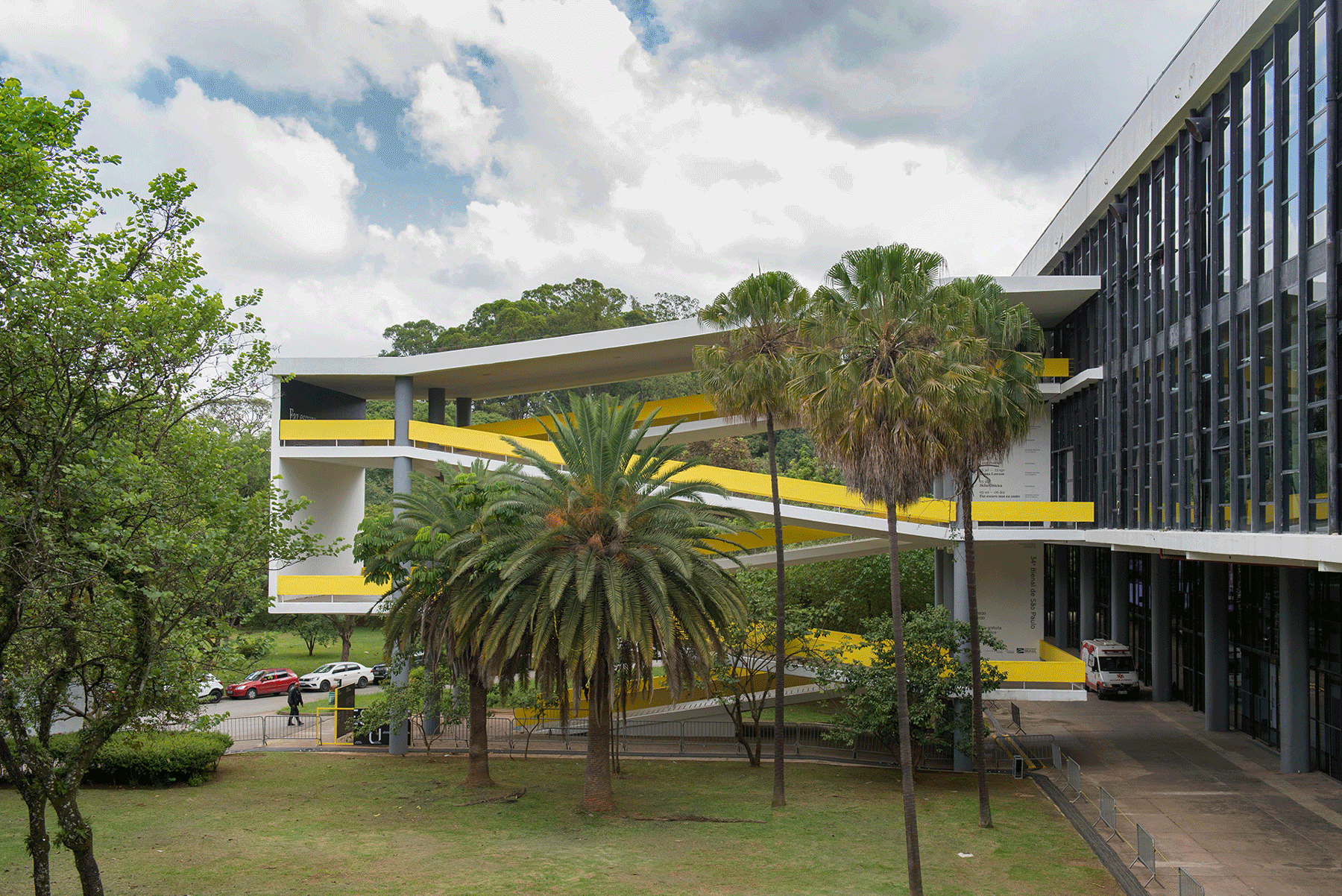
Throughout the process of constructing the 34th Bienal de São Paulo, its curatorial team, participating artists and guest authors will send out letters with open dialogues that directly and indirectly reflect the development of the exhibition. The text below was written by Vitor Cesar, author of the visual language of this edition.
Ambivalence is most often understood as a mistake, as something that is not clearly defined. In grammar, syntactic ambiguity is called amphibology, as in the example:
To a proofreader the phrase would probably need correcting, as it doesn't make clear who is responsible, whether the artist or the audience. Yet it is possible to see the phrase from the other perspective and understand that there is a double meaning there. In this case, the responsibility of the effects of the work can be shared by both artist and audience. Two possible readings, that are not contradictory, simultaneously declared.
As we construct things, visual and spatial languages are also formed. A bench at a height that invites you to sit, a place that becomes a meeting point in a square, a word that stands out in the city. In this sense – and in this conversation – we can also find things, objects and situations that are difficult to categorize immediately. Like a sidewalk that rises because of a slope in the road and comes to be used as a place to sit and meet people. This type of indistinction can lead to new lexicons.
The idea of ambivalence of form is powerful in that it produces a disorganized or reorganized reading of references that are usually understood as neutral. This comes up in a number of the projects I work on, and also guides the development of this Bienal's visual language. Visual language, and not visual identity, as a way of distinguishing from the automatisms constructed by a corporate logic of design, which prioritizes proposals that are stable, with maximum predictability of their applications.
In my first encounters with the curatorial proposals of this Biennial, I got to know some of the ideas of Edouard Glissant. Glissant problematizes the representation of identity as something with exclusively fixed roots. He mobilizes the image of the archipelago, understanding identity as something constructed in the relationship between different contacts. Reading about this reinforced the hypothesis of proposing a visual language without a "usage manual", but with initial sets of elements and syntaxes that can be experienced in different combinations over time. In this way, experimenting with different ideas and elements – colors, typographies, ways of taking up the page, overlaps, thicknesses, materials – can establish new arrangements with every combination of them.
The proposal is to learn language in its practice, in the contact and friction of every novelty or demand. It's the intersection of the parts and contexts implied by the language that gives it form and structure: like a sheet of paper that ceases to be a single plane when folded or creased, standing upright in the meeting of two planes. Its ambivalence, but also what supports it, lies in that fold.
The fold brings the page's three dimensionality into consideration, taking the materiality and thickness of the visual language beyond the surface of the paper or canvas. The supposed neutrality of devices that function as mediums of graphic languages comes into question, and their design is brought into consideration. The differences between prints, posters, banners, walls and totems also become evident. Not only differences in their scales and dimensions, but also in their materials, spatial relationships and thinking of graphic printing.
From the perspective of ambivalence, spatial visual language simultaneously becomes mediation, institutional framing and graphic practice, establishing its own relationships with the context. Thus, the yellow paint of a guard rail acts as both a guide along a pathway and as an element of a dialogue between event, architecture and the park environment. Visual language, in this case, has less of a role in representing the exhibition, and acts more in a dialogue, as an element that allows for speculation and experimentation of curatorial ideas to communicate and invite the construction of other meanings.
The idea is not to confuse things. It is more concerned with looking at practices that update an indistinction between certain disciplinary boundaries, or that raise questions about why these separations happen. Ambivalence as resistance to immediate categorization can generate readings attentive to different codes of visibility and amplify the contact and friction between different audiences.

